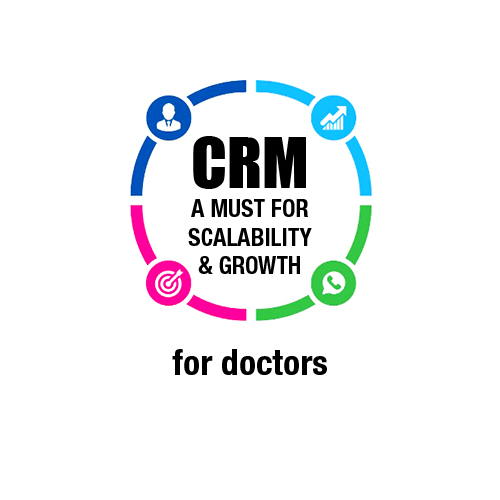 CRM for doctors
CRM for doctors
Programming & Tech
CRM development for doctors
Product Info
A CRM system for doctors is a specialized software solution that helps streamline patient management processes. It includes features such as appointment scheduling, patient record management, prescription management, billing and invoicing, communication tools, and reporting capabilities. The CRM system is designed to improve efficiency, enhance patient care, and simplify administrative tasks for doctors. It ensures effective management of patient data, facilitates communication with patients, and provides insights through reporting and analytics. The system prioritizes data security and compliance with privacy regulations to protect patient information.Description
-
Developing a CRM (Customer Relationship Management) system for doctors can greatly streamline their patient management processes and improve overall efficiency. Here's a step-by-step guide to developing a CRM specifically tailored for doctors:
-
Identify Requirements: Begin by understanding the specific needs and requirements of doctors in managing patient relationships. This could include features like appointment scheduling, patient record management, prescription management, billing and invoicing, communication tools, and reporting capabilities.
-
Design the CRM System: Once the requirements are clear, design the CRM system's architecture and user interface. Consider a user-friendly interface with intuitive navigation and easy access to critical features. Ensure that the design is responsive and can adapt to different devices, such as desktops, tablets, and mobile phones.
-
Patient Management: Develop features to manage patient records, including demographics, medical history, diagnosis, and treatment plans. Implement search and filtering capabilities to quickly retrieve patient information when needed. Also, include the ability to schedule and manage appointments efficiently.
-
Appointment Scheduling: Incorporate a comprehensive appointment scheduling module that allows doctors to manage their schedules effectively. Include features such as availability tracking, reminders, patient notifications, and the ability to reschedule or cancel appointments.
-
Prescription Management: Include a module for doctors to manage prescriptions. This should allow them to electronically generate and send prescriptions to pharmacies. Incorporate features like dosage instructions, automatic drug interaction checks, prescription history, and medication reminders for patients.
-
Billing and Invoicing: Integrate a billing and invoicing module that enables doctors to manage patient invoices, track payments, and generate financial reports. Ensure the system supports various payment methods and can generate invoices with itemized services and charges.
-
Communication Tools: Include secure communication tools to facilitate doctor-patient interactions. This could include features like messaging, email integration, and telemedicine capabilities for remote consultations. Ensure data privacy and security compliance in communication channels.
-
Reporting and Analytics: Develop robust reporting capabilities that allow doctors to analyze patient data, track key performance indicators, and gain insights into their practice. Generate reports on patient demographics, appointment statistics, revenue, and other relevant metrics.
-
Integration and Scalability: Ensure the CRM system can integrate with other healthcare systems, such as electronic health record (EHR) systems, lab systems, and medical billing software. Consider scalability to accommodate future growth and technological advancements.
-
Security and Compliance: Implement robust security measures to protect patient data and comply with privacy regulations like HIPAA (Health Insurance Portability and Accountability Act). Encrypt sensitive information, implement access controls, and regularly update security protocols.
-
Testing and Deployment: Thoroughly test the CRM system to identify and fix any bugs or usability issues. Conduct user acceptance testing with doctors and refine the system based on feedback. Once it's stable and reliable, deploy the CRM system in the doctors' practice.
-
Training and Support: Provide comprehensive training to doctors and their staff on how to effectively use the CRM system. Offer ongoing technical support to address any questions or issues that may arise.
Remember to involve doctors and their staff throughout the development process to ensure the CRM system meets their specific needs.
-

